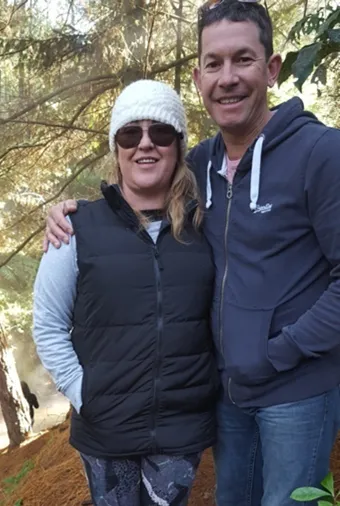Name:
Brenton & Fiona Mosey
Location:
Ngapala (west of Point Pass)
Average Rainfall:
500 mm
Enterprises:
Sheep & wool; 20% of farm leased for cropping
Farm Area:
2,000 hectares
Brenton and Fiona Mosey have been managing 'Weeroona' at Ngapala in the mid north of South Australia for about 10 years. Weeroona has been in the Mosey family for over 130 years and is a 2000 hectare farm, in a generally reliable 500mm rainfall region; although the annual rainfall has only been 250 mm for the last three years, creating significant challenges.
Since taking management of the property from his father, Brenton has made significant improvements in productivity. A key tool to assist in identifying areas for improvement has been his involvement in the Mid-North Benchmarking group facilitated by Daniel Schuppan of Nutrien Ag Solutions (Landmark) for the last five years. Key sheep and wool production data is collected and analysed each year, and then discussed in detail when the group meets.
“The group is very open and honest, and willing to share what has worked well and not worked so well.”
Key areas that Brenton has identified as important for his business through the benchmarking and group discussion includes level of inputs, lambing percentage and carrying capacity.
These have been built in to his 5 year goals for the business that include:
The Weeroona property includes 560 hectares of permanent hills grazing, with limited access to spreading fertiliser, with a further 660 hectares that has been improved through sowing clovers and top dressing. Whilst 54 hectares has been sown to permanent pasture (phalaris, perennial ryegrass & clover) the recent dry years have been a struggle for the perennials.
An area of the property is set aside for sheep feed alone, with 80 hectares sown to barley for grazing and another 80 hectares sown for feed grain or hay. The remaining area, being the best arable country, is leased for permanent cropping with grazing rights of the stubbles.
Brenton currently runs a 2400 2600 merino ewe self-replacing flock (depending on the season), with the oldest ewes being mated to White Suffolk rams to produce prime lambs. This is a significant increase from the 1800 ewes he was running when he first joined the benchmarking group. Involvement in the group helped him achieve this productivity increase.
Through benchmarking, Brenton identified that his fertiliser inputs were on the low side compared to other members of the group. As such, he now spreads single super over most of pasture accessible with a spreader every two years. Improvements in pasture and grazing management have also contributed to the ability to increase stocking rates significantly.
Traditionally the property was set stocked through the growing season, whereas Brenton now rotates pastures every 3 to 4 days with 40 to 50 days between grazing. The principle behind rotational grazing is to optimise pasture utilisation which in turn increases productivity.
The main challenge has been having enough paddocks to get the 40 to 50 day break between grazings. Brenton has achieved this by reducing the number of mobs from six mobs of 1,000 DSE (Dry Sheep Equivalent) to two large mobs of 3,000 DSE. He has also subdivided one of his largest (360 hectare) hills grazing paddock into nine 40 hectare paddocks. This hills grazing paddock is predominately annual grass with some perennial native grasses and is not grazed from late Spring to allow the native grasses to seed and reproduce.
“Paddocks with perennial pasture are always the first to grow at the beginning of the season and the last to finish at the end of the season.”
A key challenge has been to provide more grazing in the arable paddocks for a longer time. Sowing perennial pastures (perennial ryegrass and phalaris) and clovers has helped to achieve this. These paddocks are maintaining their growth and persistence through careful management and providing enough inputs. The paddocks are limed before sowing and topdressed with 90kg/ha of single super 2 out 3 years. Through rotational grazing and sowing perennial pastures stocking rate has increased from 3DSE to 4DSE per winter grazed hectare in 5 years.
Pasture utilisation has increased by 50 percent through rotational grazing. In the past using a set stocking program the sheep selectively grazed their favourite piece of pasture, whereas now with massive stocking rates for very short periods the sheep crash graze the paddocks evenly and graze all of the grass at the optimum growth period. The paddocks recover well and have an even growth rate. The native grasses are increasing on the permanent hills grazing country, as they are able compete and seed over late spring and summer.
Brenton expects to see further improvements in the pasture through the rotational grazing, sowing more perennial pastures, controlling pests and weeds and continuing the application of inputs. The next stage in his program is to have enough paddocks to provide a 60 day break in the middle of winter when the growth rates of the pasture is at its slowest. This will be achieved through splitting some of the large permanent pasture paddocks using a mix of permanent and temporary electric fencing.
“Benchmarking has highlighted the value and need for the right amount of feed”.
